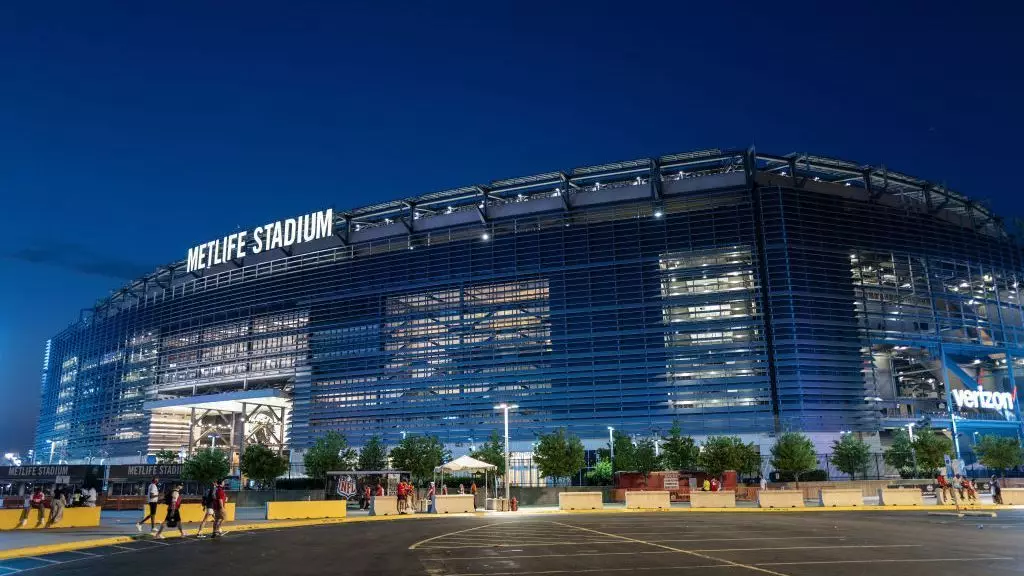On a momentous Saturday, FIFA unveiled the venues for the long-anticipated 2025 FIFA Club World Cup, marking a pivotal moment in the evolution of club football. With MetLife Stadium in East Rutherford, New Jersey, chosen as the site for the final, this tournament promises to initiate a groundbreaking chapter in global football. Slated to commence on June 15, the competition will also feature iconic stadiums across the United States, including Mercedes-Benz Stadium in Atlanta and the Rose Bowl in Los Angeles. This strategic selection reflects FIFA’s commitment to creating a spectacular and inclusive platform for club competition.
FIFA President Gianni Infantino heralded this upcoming event as an opportunity to redefine the landscape of club football. His statement at the Global Citizen Festival in New York shed light on the magnitude of this initiative, emphasizing the participation of 32 elite clubs from around the world. Infantino’s optimism sets a hopeful tone, suggesting that this global competition will serve as a unifier of footballing talent from diverse backgrounds and regions.
One of the significant changes to the Club World Cup format is its expansion from a seven-club model to a more inclusive 32-team competition. This revolutionary shift not only enhances the level of competition but also allows for representation from various footballing federations, thus increasing the visibility and growth of the sport on a global scale. The draw for the tournament is set for December, although the marvel of anticipation hangs in the air, as just two qualifiers remain outstanding—one from South America and one from the U.S.
However, the path to this ambitious tournament is not without its challenges. The planning process had to consider the congested soccer calendar, especially with the 2025 Gold Cup aligned with several West Coast matches during the same timeframe. As a result, the decision to primarily host the Club World Cup on the East Coast was an intelligent move to mitigate potential scheduling conflicts. Moreover, the inclusion of certain venues, like Lumen Field, came as a response to unique circumstances, such as the Seattle Sounders’ qualification, emphasizing the complexity of organizing such an expansive tournament.
Despite the grand vision set forth by FIFA, not all reactions to the tournament’s announcement have been favorable. Several stakeholders within the football community, including FIFPRO and the Professional Footballers’ Association in England, have voiced their apprehensions regarding the potential for schedule congestion. With the summer typically reserved for international windows, there is palpable concern about the pressures this tournament may place on players and clubs already navigating demanding schedules.
Among the dissenters, the Premier League has particularly questioned the timing and implications of hosting such a prestigious tournament during an already packed period. The pushback from these organizations underscores a significant tension between the ambitions of FIFA and the operational realities faced by clubs and players at all levels. This dynamic warrants careful consideration and dialogue as the footballing community seeks to strike a balance between expanding the sport’s horizons and managing its existing frameworks.
Football as a Global Unifier
In response to the criticisms, Infantino reaffirmed FIFA’s commitment to creating a platform that embodies inclusivity and opportunity. He described the 2025 FIFA Club World Cup as a transformative initiative that brings together top clubs from Africa, Asia, Central and North America, and Oceania alongside traditional powerhouses from Europe and South America. By fostering diversity in the competition, FIFA hopes to not only spotlight emerging talents but also inspire hope in formerly underrepresented footballing communities.
This altruistic ideology of football transcending boundaries and forming connections is indeed admirable. However, the true test will be in the execution of this vision. Ensuring fair play, sufficient rest periods for players, and accommodating travel logistics will be crucial to the overall success of the tournament. The balance between maintaining league integrity while elevating club football on a global stage presents a comprehensive challenge that FIFA must address.
The announcement of the 2025 FIFA Club World Cup promises to usher in a new era in club football, filled with excitement and anticipation. While the initiative is ambitious, the forthcoming months will demand that FIFA navigate the complexities of this undertaking with deliberation and open communication.
As fans and clubs gear up for this unprecedented chapter, one truth remains: the heart of football is its community, and it is the responsibility of governing bodies to protect the players, clubs, and cultures that make the sport so beloved worldwide. The world will indeed be watching as this new vision for club football unfolds, eager to see whether it lives up to the lofty aspirations set forth.


Leave a Reply